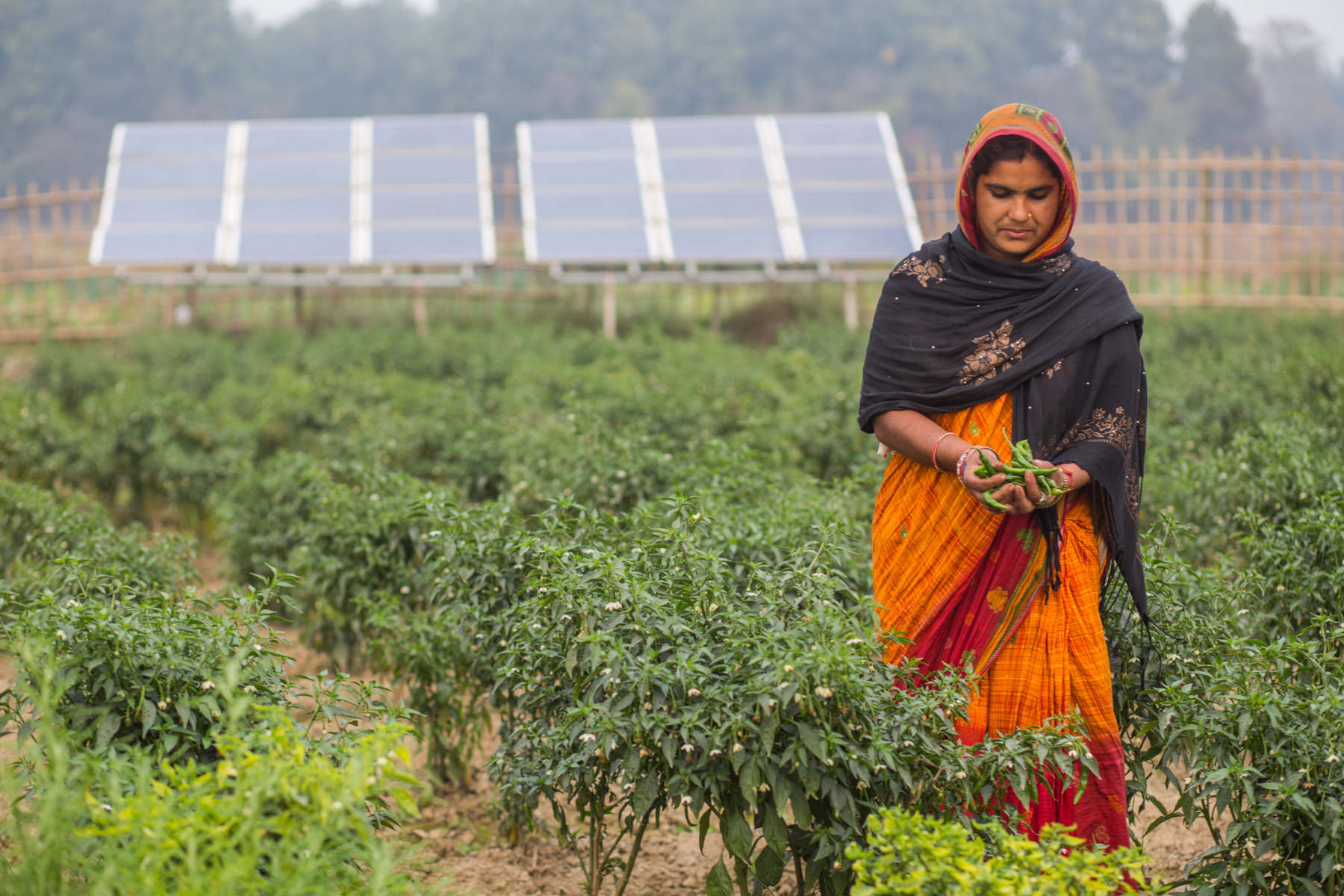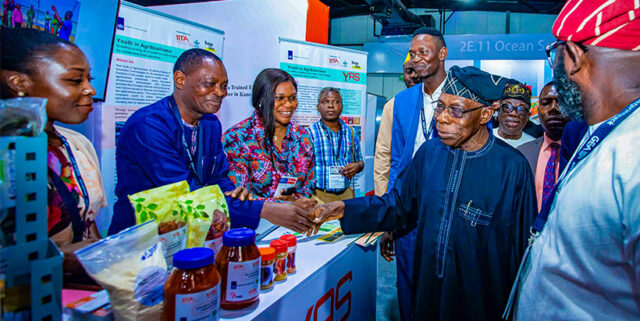
On the occasion of International Women’s Day, researchers leading work in CGIAR’s Gender Equality Initiative offer insights on how agricultural technologies can help rural women overcome the impacts of climate change.
by Ochuwa Favour Daramola
CGIAR’s Gender Equality Initiative (HER+) supports women in agri-food systems to better cope with climate change impacts. Its research aims to support women to acquire, control and use technologies; increase their access to markets as well as financial and public services; and to expand their voice and agency in agri-food systems governance. The initiative will deliver evidence and tools that can inform future efforts to increase equality and resilience in agri-food systems.
Below we hear from four researchers of HER+, namely Steven Cole who leads the initiative’s work on gender transformative approaches, and from Ranjitha Puskur who leads on bundling socio-technical innovations. They are joined by Shalini Roy, who leads work on enabling gender-responsive social protection, and by Katrina Kosec who leads work on inclusive institutions and governance.
Q: In what areas of the agri-food system do you think women face the greatest challenges?
Cole: “First of all, women are experiencing different challenges created by climate change compared to men, such as women’s limited power to make decisions on which agricultural technologies and good management practices to use to increase productivity, profitability as well as food and nutrition security.”
Puskur: “For me, it is women’s constrained access to productive assets and resources, including inputs, technologies, credit and services. Also, while awareness of and access to new technologies and innovations remain a constraint for women, they often need other complementary innovations, such as access to credit, land, mobility, skills and capacity, to be able to use these technologies. Without enabling and accompanying efforts, technologies cannot benefit women.”
Roy: “Evidence suggests that challenges span gender inequalities in agency, resources, social norms, and governance; I think all need to be addressed together. Each is also exacerbated by climate change, which has shaped the framing of our initiative. Among these, women’s unequal access to resources is a major driver of inequality. Women can be powerful agents of change in responding to changes in the agrifood system – including climate change – if they have the resource base to take action. Unfortunately, often they do not have sufficient access to or control over resources.”
Kosec: “I would say the biggest challenge is that women have less voice and agency compared to men in agri-food system governance, and in decision-making beyond the household more generally. They also frequently confront a policy environment that is gender blind or otherwise fails to support women. When policies, institutions and governance do not incorporate women’s voices and prioritize women’s unique needs, we need to fix the system.”
Q: In which ways can the research that the Gender Equality Initiative is set to undertake help lift the burden off women?
Puskur: “We are developing combinations of technical, social, institutional and policy innovations that will enhance women farmers’ resilience to climate change. We will factor in relevant intersectional factors, such as age, race, caste and income, that determine the identity of these women. We plan to develop a toolkit to enable and guide researchers, development practitioners and investors to design and implement bundles of technologies that evidence tells us will work for women. This will enhance the efficiency of and returns on investments in research and development efforts, benefit women and contribute to equitable development.”
Cole: “By carrying out research in partnership with different development and research stakeholders–including women and men farmers–we can better understand the social and gender norms and power relations that create constraints and barriers to women’s participation in and benefits derived from agriculture. We can use the research to inform the design of gender-transformative interventions–those that change the unwritten rules about what women can and cannot do–to create opportunities for all the stakeholders to critically reflect on and address these underlying causes of gender inequalities in agriculture.”
Roy: “We know social protection programs—such as those providing cash or food transfers—reach many poor rural women, so informing design decisions can be very impactful. Social protection has significant potential to support climate responses for rural women and their households at scale, by providing a resource base and other complementary support to strengthen assets, livelihoods and empowerment. We are working to build evidence that can inform design of future programs to better build gendered climate resilience.”
Kosec: “We need guidance for policymakers and other key decision-makers in rural settings on how to build women’s voice and agency beyond the household. If we can provide concrete and actionable evidence on the barriers women face to exerting their voice and agency in communal governance, policymakers will be armed with information to change programming and approaches.”
Q: Considering the theme for International Women’s Day this year,“DigitALL: Innovation and technology for gender equality”, how can increasing women farmers’ access to technologies help boost their climate resilience?
Puskur: “Women’s access to climate-smart technologies, such as stress-tolerant varieties and management practices, allows them to stave off the potential negative impacts on yield arising from climate shocks and stresses. Evidence suggests that helping women gain access to labor-saving and drudgery-reducing climate-smart technologies can reduce their labor burden and time poverty, while also contributing to their well-being. This is important for human capital building, which is critical for resilience.
What’s more, enhanced knowledge and skills to use new technologies enable women farmers to become informed decision makers. Past research indicates that communities where women play leadership roles in early-warning systems are better prepared for natural disasters and recover faster. Access to digital technologies can be a means to gain access to this information more efficiently.”
Q: We know that even when women farmers have access to technologies, they are not always able to fully benefit. How do policies, institutions and norms need to change for women to benefit from agricultural technologies?
Roy: “Policies, institutions and norms create the enabling environment for women to take strategic action within the agri-food system. As an example of policy change, tweaking designs of social protection programs to make them more gender responsive and climate responsive can support women in using resource transfers and complementary support to build their assets, livelihoods and empowerment, ultimately strengthening climate resilience for themselves and their households.””
Kosec: “It is important to create both a demand for and a supply of opportunities for women to exercise voice and agency within the agri-food system. Women need the education, tools and supportive social networks to demand that they be included where community decisions are being made. Policies and men allies can then further create a receptive environment for women’s voice. This can contribute to changing agri-food systems and help women operate within those new systems, including with greater climate resilience.”
Work currently underway within the Gender Equality Initiative includes
TRANSFORM
|
EMPOWER
|
PROTECT
|
VOICE
|



